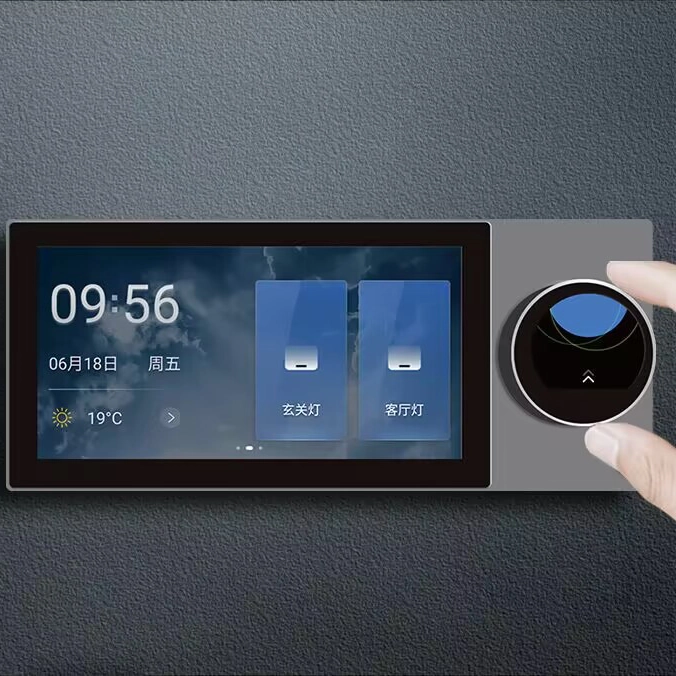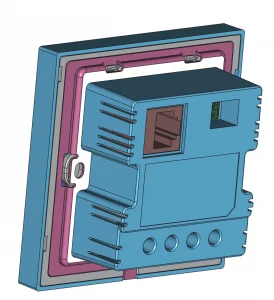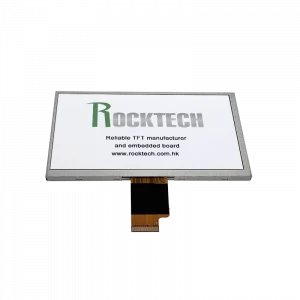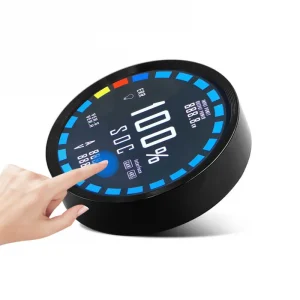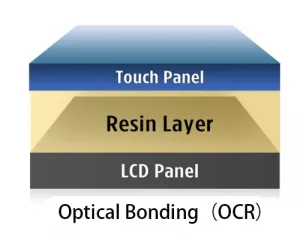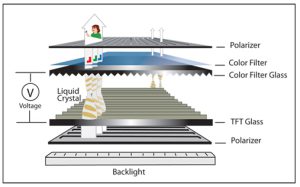The smart home industry is evolving rapidly, driven by the demand for more intelligent, responsive, and energy-efficient devices. At the heart of this transformation lies the embedded Single Board Computer (SBC). From voice assistants and smart thermostats to AI-powered control panels, SBCs have become the essential computing platform that enables seamless home automation. In this article, we’ll examine how SBCs—particularly those based on Rockchip SoCs—are reshaping the smart home landscape with better cost-efficiency, multimedia performance, and AI capabilities.
Introduction to Embedded SBCs in Home Automation
Embedded Single Board Computers (SBCs) are becoming a core component in smart home devices. They offer a compact, energy-efficient, and powerful platform for running Linux or Android, handling tasks like display control, AI processing, and wireless communication.
Compared to traditional microcontrollers or desktop solutions, SBCs strike a balance between performance, flexibility, and cost—making them ideal for always-on home automation scenarios.
In this article, we’ll explore their functions, compare Rockchip vs NXP SBCs, and show why Rockchip is gaining traction in this fast-growing market.
What Is an Embedded SBC?
An embedded SBC (Single Board Computer) is a complete computer built on a single circuit board. It includes a processor, memory, storage, and I/O ports.
Unlike microcontrollers, SBCs run full operating systems like Linux or Android, making them suitable for complex smart home applications.
They are often used in touch panels, voice assistants, gateways, and more.
Why SBCs Are Ideal for Home Automation Applications
SBCs combine computing power, wireless connectivity, and multimedia capabilities in a compact form.
They support 24*7 operation, integrate easily with sensors and actuators, and reduce time-to-market for smart devices.
Their flexibility and low cost make them ideal for building reliable and scalable smart home systems.
Key Functions of SBCs in Smart Homes
Embedded SBCs enable multiple smart home features by combining processing, control, and connectivity on a single board. Below are some of their key roles:
Touch Panels & Smart Displays
SBCs drive user interfaces on wall-mounted screens, smart mirrors, and home hubs.
Voice Control & AI Processing
Support for microphones and AI frameworks allows real-time voice recognition and local processing.
Wireless Connectivity: Wi-Fi, Bluetooth, Zigbee
SBCs integrate wireless modules for seamless communication across devices and sensors.
Integration with Sensors, Relays, and Actuators
SBCs control lights, switches, temperature sensors, and more through GPIO, I2C, and UART.
Choosing the Right SoC for Home Automation
When designing smart home devices, selecting the right System on Chip (SoC) is critical. The ideal SoC must strike a balance between performance, power efficiency, cost, and software ecosystem.
Key Selection Criteria
| Factor | Explanation |
|---|---|
| Performance | Enough CPU/GPU/NPU capability for your workload |
| Power Efficiency | Important for always-on or battery-powered devices |
| Cost | Directly affects final product pricing and market competitiveness |
| I/O & Peripheral | Must match display, audio, sensor, or communication needs |
| Software Ecosystem | Good Android/Linux SDK, community support, long-term availability |
Rockchip vs NXP: Price and Hardware Capability Comparison
| Feature | Rockchip RK3566 | NXP i.MX 8M Mini |
|---|---|---|
| CPU | Quad-core Cortex-A55 | Quad-core Cortex-A53 |
| GPU | Mali-G52 2EE | GC7000Lite |
| AI Support (NPU) | Optional 0.8 TOPS NPU | No NPU |
| Display Interfaces | HDMI, MIPI-DSI, LVDS | MIPI-DSI only |
| Multimedia | 4K H.265/H.264 decode, 1080p encode | Only up to 1080p video |
| Audio | Rich audio: I2S, TDM, SPDIF, PDM | Limited audio interfaces |
| Wireless Support | SDIO Wi-Fi/BT, PCIe LTE modules | SDIO only |
| Mainline Linux Support | Good community & SDK support | Strong Yocto/Linux BSP |
| Cost (SBC level) | Lower (approx. $30–$45 USD) | Higher (approx. $50–$65 USD) |
| Availability | Stable for large-scale projects | Long-term supply guaranteed |
Why Rockchip SBCs Are Gaining Popularity
Rockchip offers better multimedia and AI performance at a lower cost, especially suitable for touch panels, AI interfaces, and camera systems.
NXP is known for long-term support and is suitable for industrial systems where ecosystem stability is critical.
Rockchip SBC Lineup for Different Smart Home Needs
Rockchip offers a diverse range of SoCs tailored to various smart home scenarios—from cost-sensitive voice control devices to high-end AI-powered multimedia terminals. Here’s a comparison of three popular options:
| Feature | RK3308 | RK3566 | RK3576 |
|---|---|---|---|
| Positioning | Entry-level for voice & gateway | Mid-range for HMI & smart displays | High-end for AI + multimedia interfaces |
| CPU | Quad-core Cortex-A35 | Quad-core Cortex-A55 | Quad-core Cortex-A72 + Cortex-A53 |
| AI Accelerator | No | Optional (NPU: 0.8 TOPS) | Built-in 6.0 TOPS NPU |
| Display Output | None or minimal (SPI LCD) | HDMI, MIPI-DSI, LVDS | HDMI 2.0, MIPI-DSI, eDP |
| Audio Interface | 4x PDM, I2S, TDM | I2S, TDM, HDMI audio | Rich audio interface, multi-channel |
| Connectivity | Ethernet, USB 2.0, SPI | USB 3.0, Ethernet, PCIe, SDIO | USB 3.1, Gigabit LAN, PCIe 2.1 |
| Typical Use Case | Smart speakers, voice gateways | Touch controllers, wall panels | AI camera hubs, smart mirrors |
| OS Support | Linux, RTOS | Linux, Android | Linux, Android |
| Cost Range | Very low | Medium | Higher-end |
RK3308 — Budget-Friendly SBC for Voice Control & Gateways
RK3308 is optimized for audio processing, making it perfect for voice assistants, intercom systems, and smart gateways.
Its ultra-low power consumption and affordable pricing make it a strong choice for high-volume deployments.
RK3566 — Mid-Tier All-Rounder for Smart Displays and HMI
RK3566 strikes a balance between performance and cost. It supports multiple displays, moderate AI tasks, and fast storage.
Ideal for wall-mounted touch panels, smart thermostats, and home dashboards.
RK3576 — High-Performance Choice for Multimedia & AI-Powered Interfaces
With powerful CPU cores and a 6.0 TOPS NPU, the RK3576 handles HD video, AI vision, and interactive UI with ease.
It suits premium smart home products such as AI camera hubs, smart mirrors, and central control panels.
tips:Higher-performance SoCs, such as the RK3588, are currently less suitable for home automation applications due to their high cost and excessive performance for typical smart home tasks.
Real-World Applications and Case Studies
Rockchip SBCs have been successfully deployed in a wide range of smart home products. Below are some typical use cases based on specific SoCs.
Smart Thermostat with RK3308
RK3308’s low power consumption and strong audio capabilities make it ideal for smart thermostats with voice input and basic display needs.
It can handle voice commands locally, connect to Wi-Fi, and control relays for HVAC systems.
Wall-Mounted Touch Controller with RK3566
With HDMI/MIPI display support, moderate AI power, and multiple I/O options, RK3566 is widely used in wall-mounted touch panels.
These panels control lighting, curtains, temperature, and more—often acting as a central hub.
AI Camera Hub or Smart Mirror with RK3576
RK3576 offers high-performance AI and multimedia capabilities, making it perfect for smart mirrors with face recognition or camera hubs for security and automation.
These devices benefit from the chip’s 6.0 TOPS NPU, HDMI 2.0 output, and rich I/O options.
Conclusion
Why Rockchip-Based SBCs Are a Smart Investment for Home Automation
Rockchip SBCs offer an excellent balance of performance, cost, and features tailored for smart home applications.
With support for Android/Linux, AI acceleration, multimedia, and a wide range of interfaces, they are flexible enough to power everything from voice gateways to advanced AI panels.
Compared to NXP and other competitors, Rockchip provides stronger multimedia and AI capability at a lower price, making it a smart investment for scalable home automation solutions.
Future Trends and What to Expect Next
As AI and local processing become more important in home automation, SBCs with on-device intelligence will become standard.
Future SBCs will likely integrate more powerful NPUs, better power efficiency, and native support for protocols like Matter and Thread.
Rockchip is well-positioned to lead this evolution, offering SoCs that are ready for both current deployments and future upgrades.

